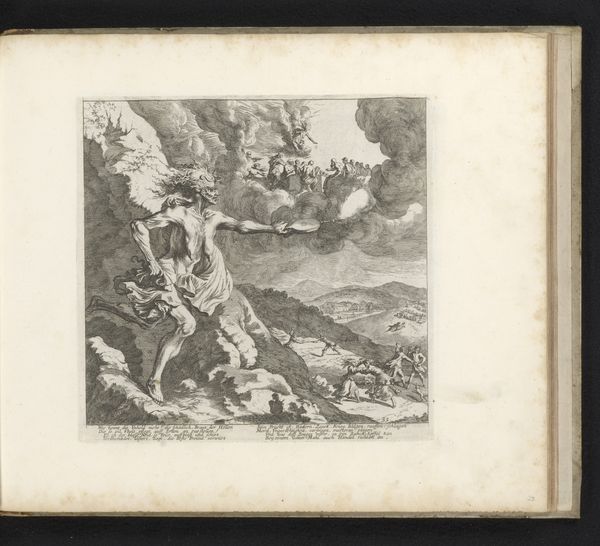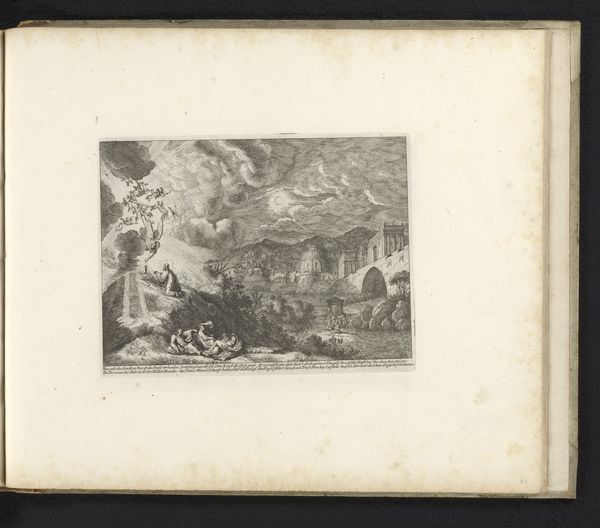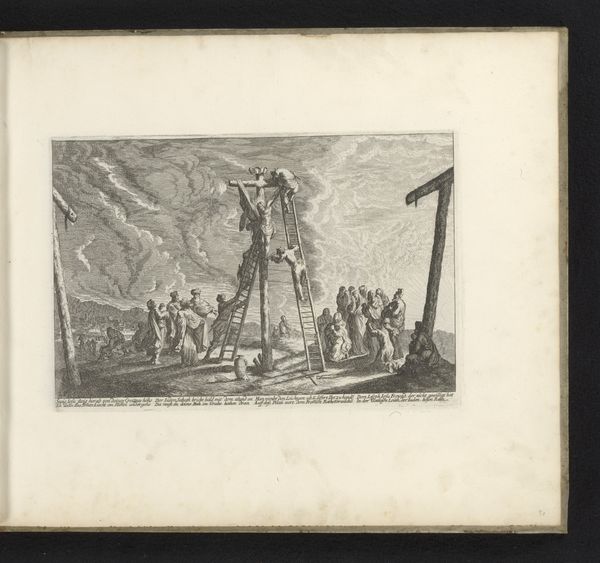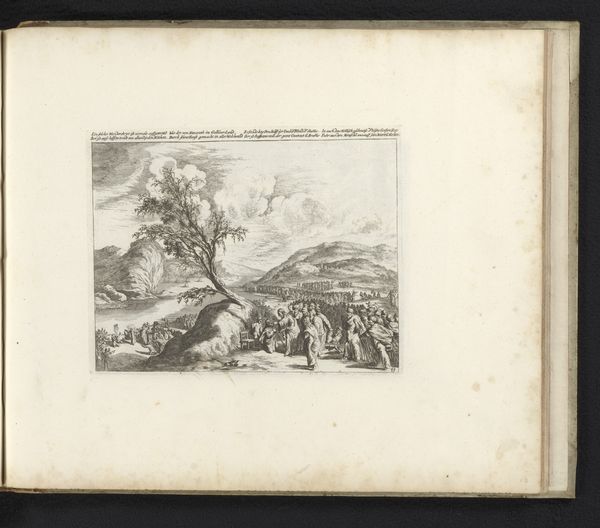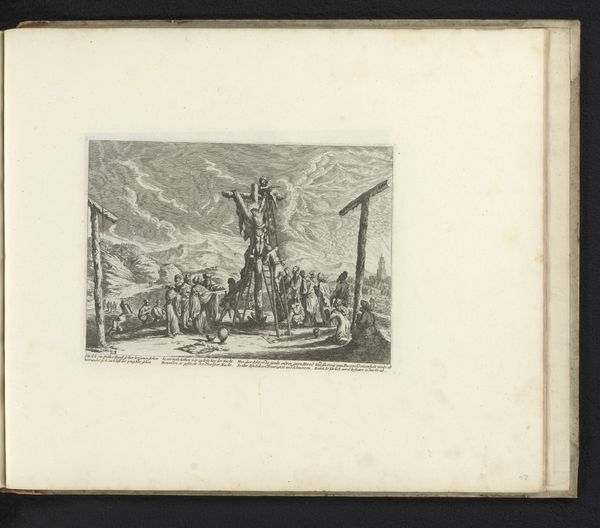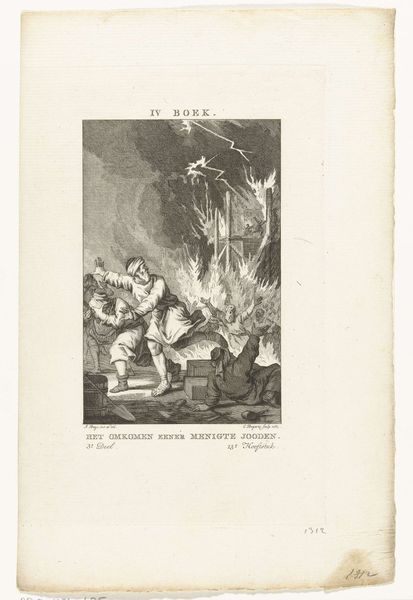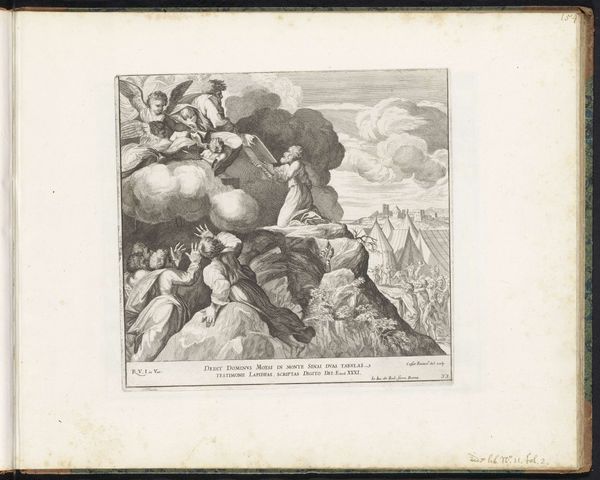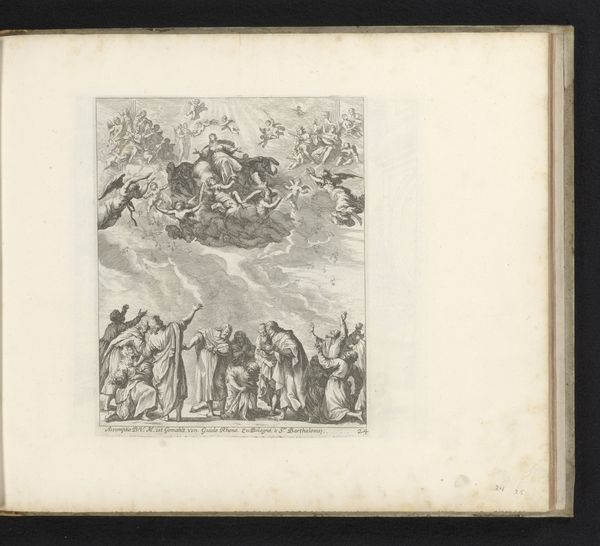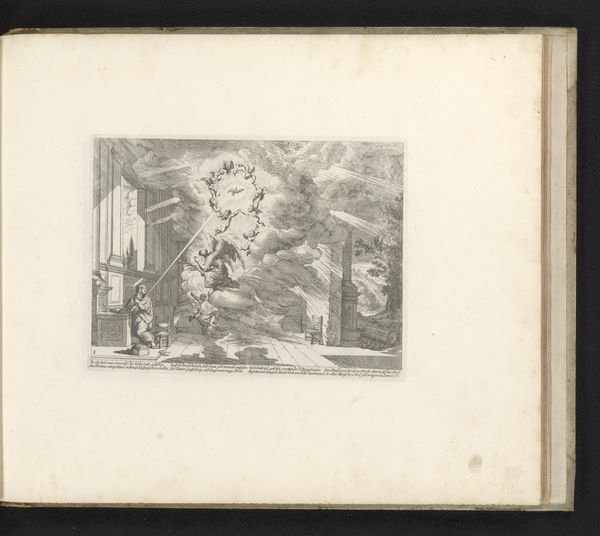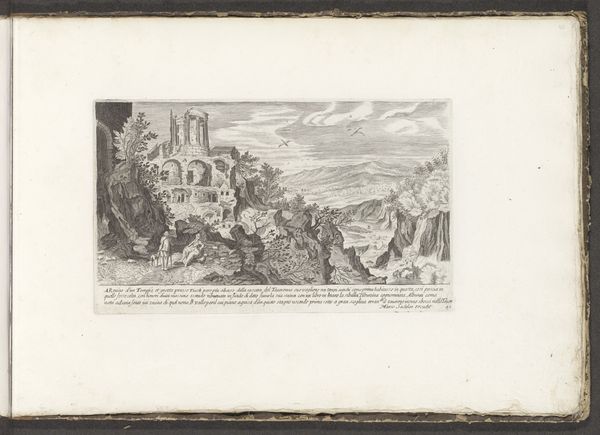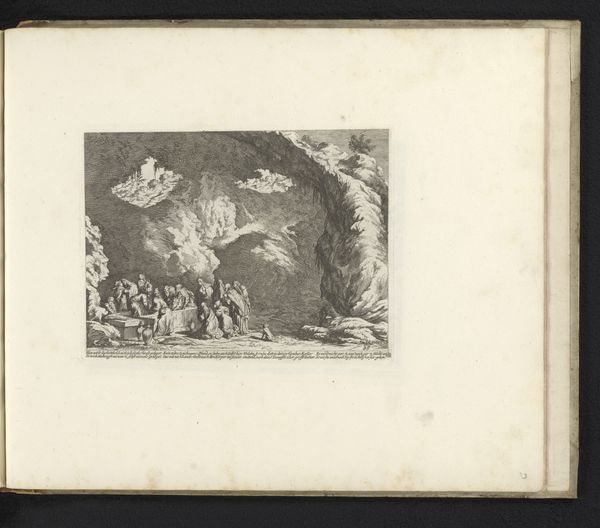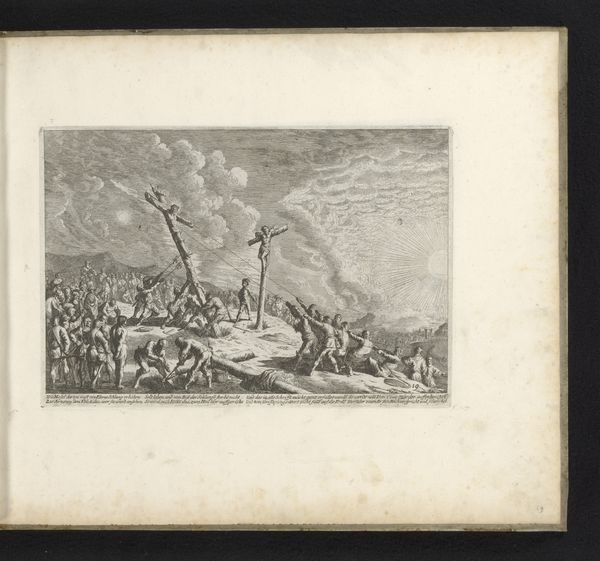
print, engraving
#
baroque
# print
#
figuration
#
line
#
history-painting
#
engraving
#
christ
Dimensions: height 171 mm, width 252 mm
Copyright: Rijks Museum: Open Domain
Curator: Just look at that wildness. Editor: Indeed. What we have here is "Opstanding," or "Resurrection" in English, a baroque print made between 1670 and 1682 by Melchior Küsel, currently held in the Rijksmuseum collection. The engraving medium captures such an emotional historical scene! What do you think when you observe this artwork? Curator: Absolute chaos. Bodies strewn about like discarded laundry, a divine figure emerging amidst a swirl of… well, it looks like really angry marshmallows, and all etched in lines so fine they practically vibrate. Does it feel a bit frenetic to you? Almost feverish? Editor: Precisely. It's worth considering how Küsel’s work engages with specific theological discourses and broader socio-political anxieties of his era. The engraving reflects the period’s investment in depicting the spiritual overcoming of earthly chaos through divine intervention. Also, such an artist and artwork must also be situated within evolving visual languages of power. Curator: Power indeed! Just observe how this ascending Christ seems almost nonchalant, even bored. All the drama happening below, while up above it looks pretty chill, doesn't it? And why so many folks flailing around? It’s so delightfully excessive! Editor: Those are likely representations of Roman soldiers, felled by the power of the divine as they witness the impossible act of the resurrection. This also speaks to larger narratives of oppression and resistance against state power of that time. Curator: Right. Well, they certainly look surprised. Perhaps they should have had a union. So much better treatment. So what’s the message? Is it simply that good triumphs over evil? The artwork seems complex enough, especially in its small format, so perhaps that’s not what Küsel had in mind at all? Editor: This piece invites critical reflection on the historical constructions of divinity, power, and resistance, especially during and after the tumult of the 17th-century religious wars. We must question who benefits from these narratives and who is marginalized. It's about reevaluating whose stories get etched in history. Curator: Ah, food for thought! Maybe the point isn’t just who gets to write history, but who gets to *engrave* it, in lines so tiny, but potent with power? Editor: Exactly. It invites all of us to critically observe history and ask vital, intersectional questions.
Comments
No comments
Be the first to comment and join the conversation on the ultimate creative platform.
